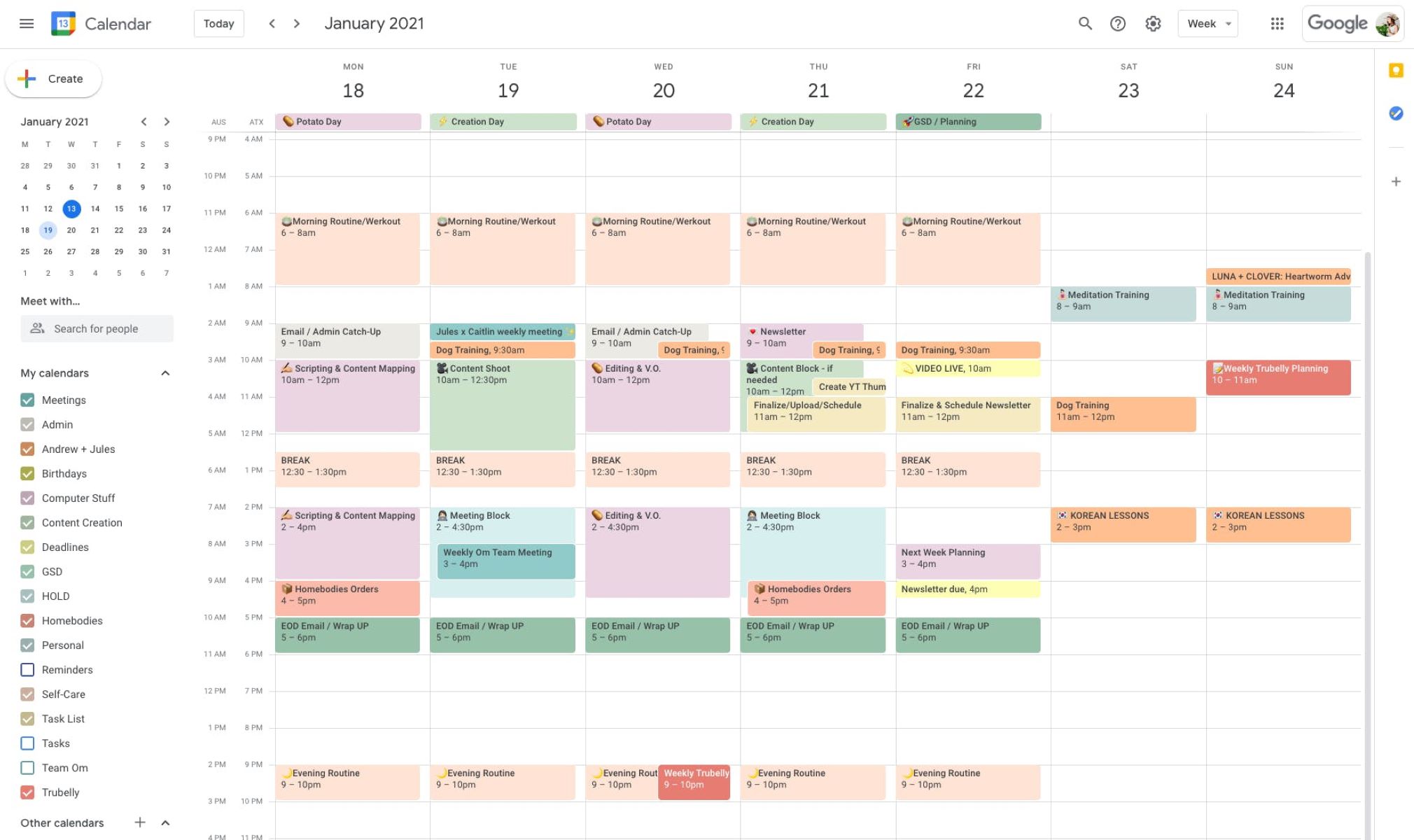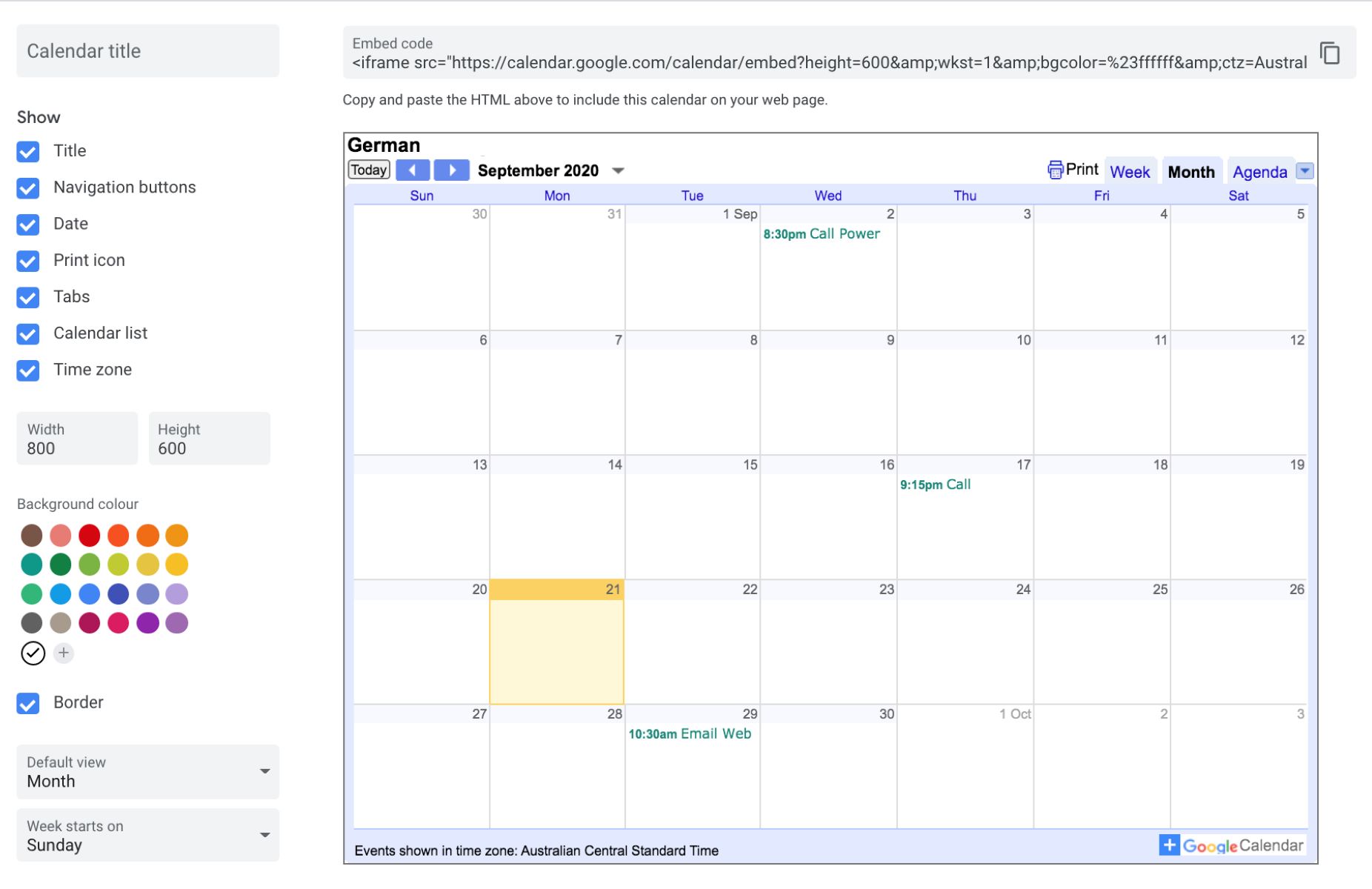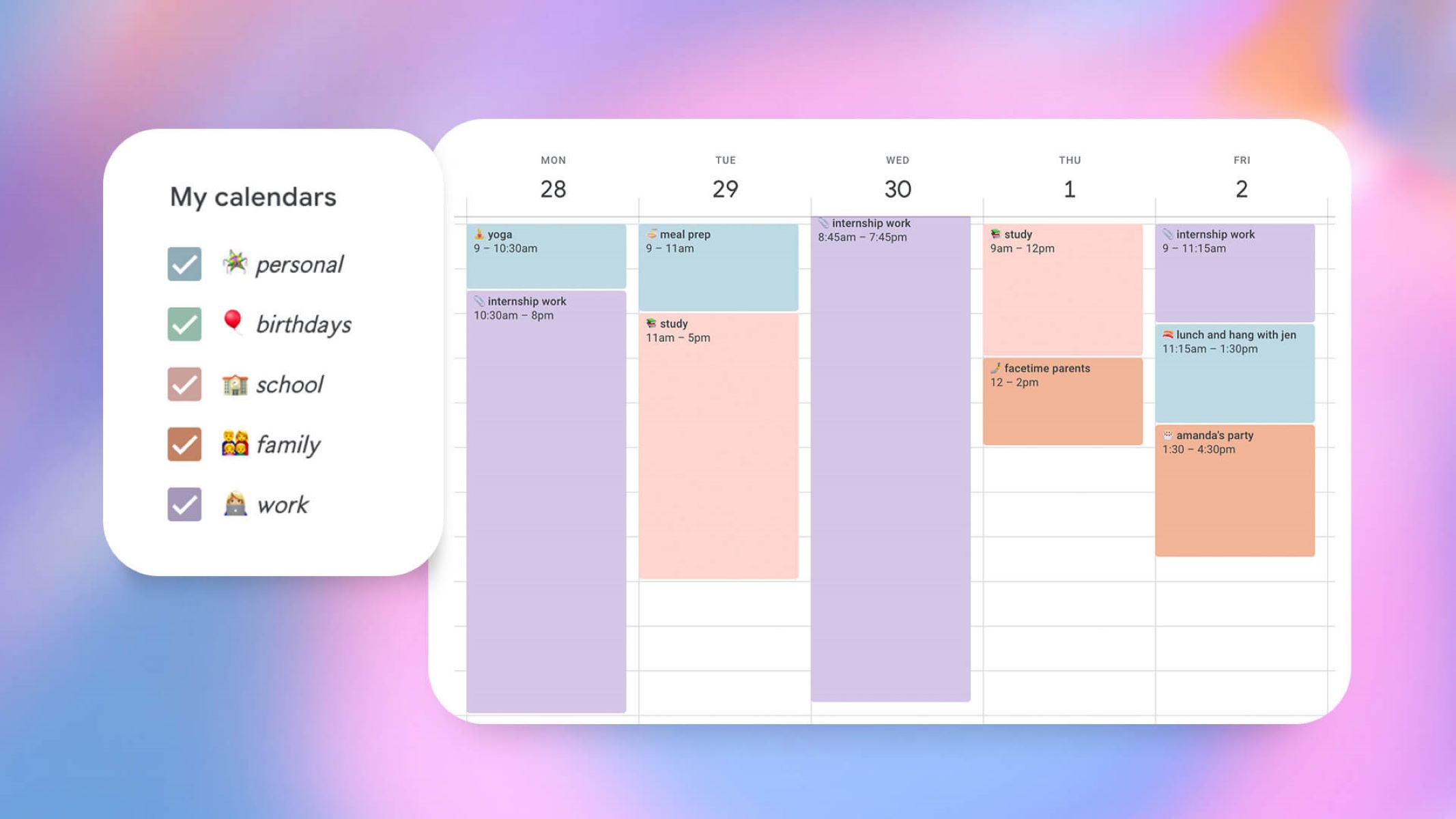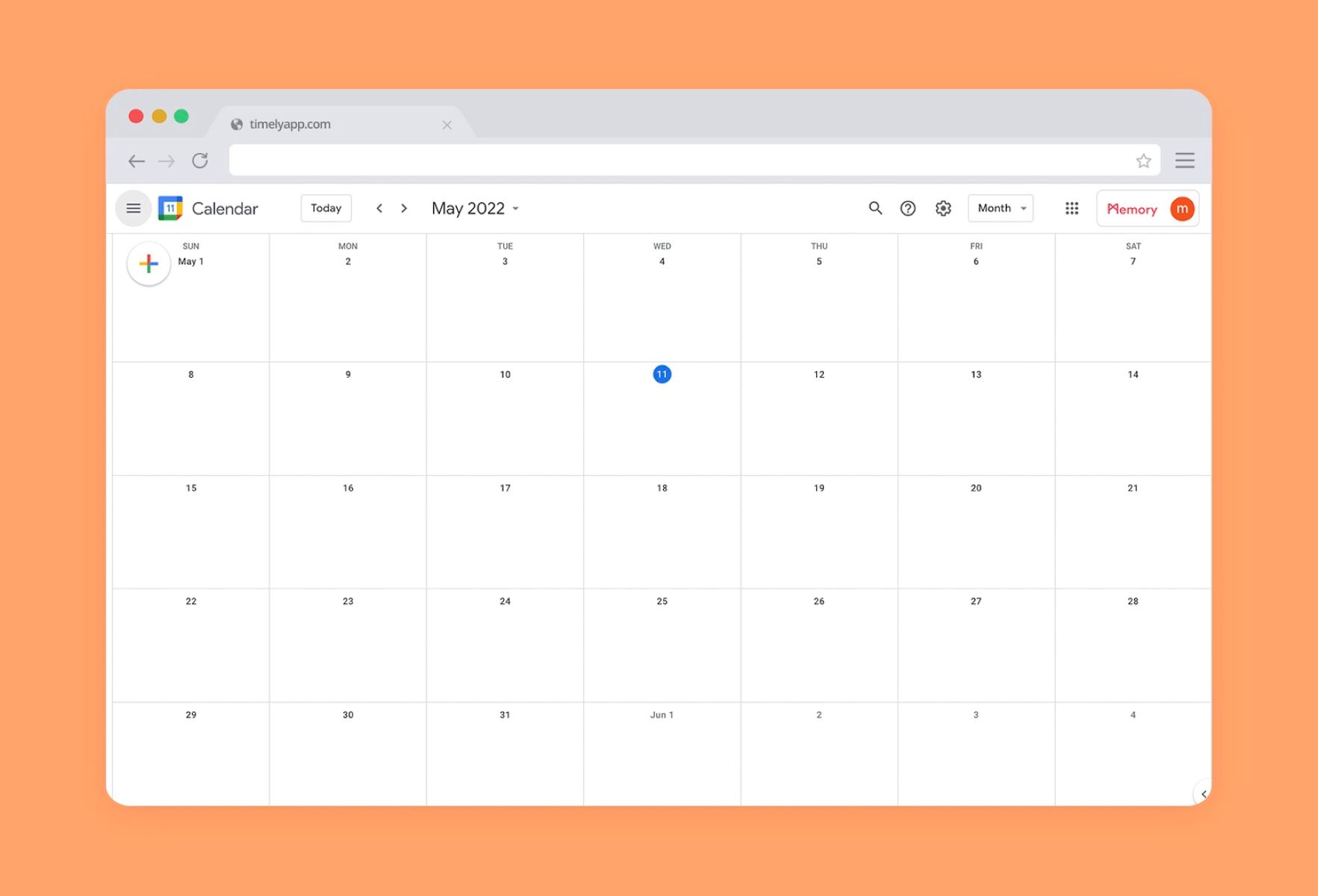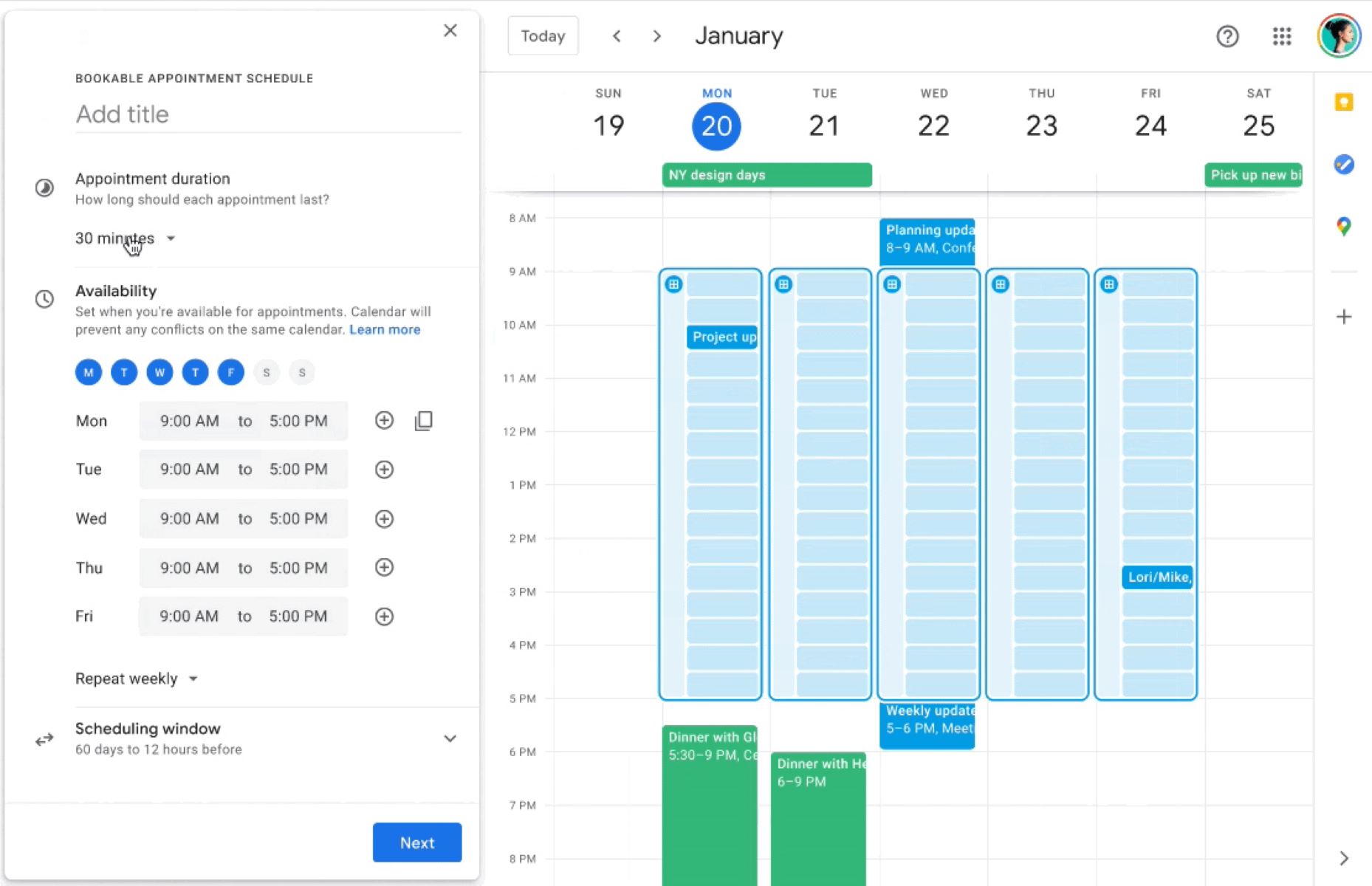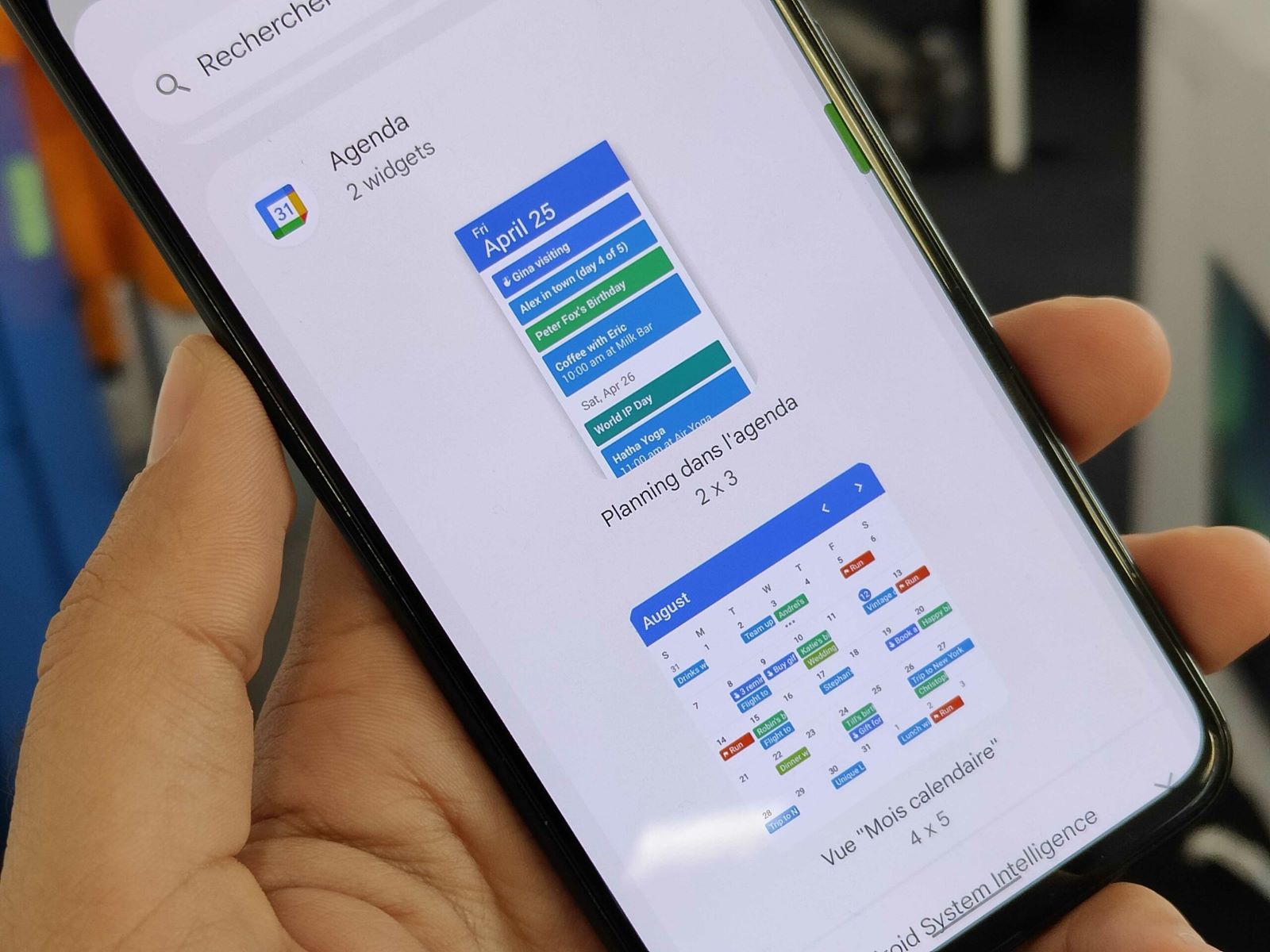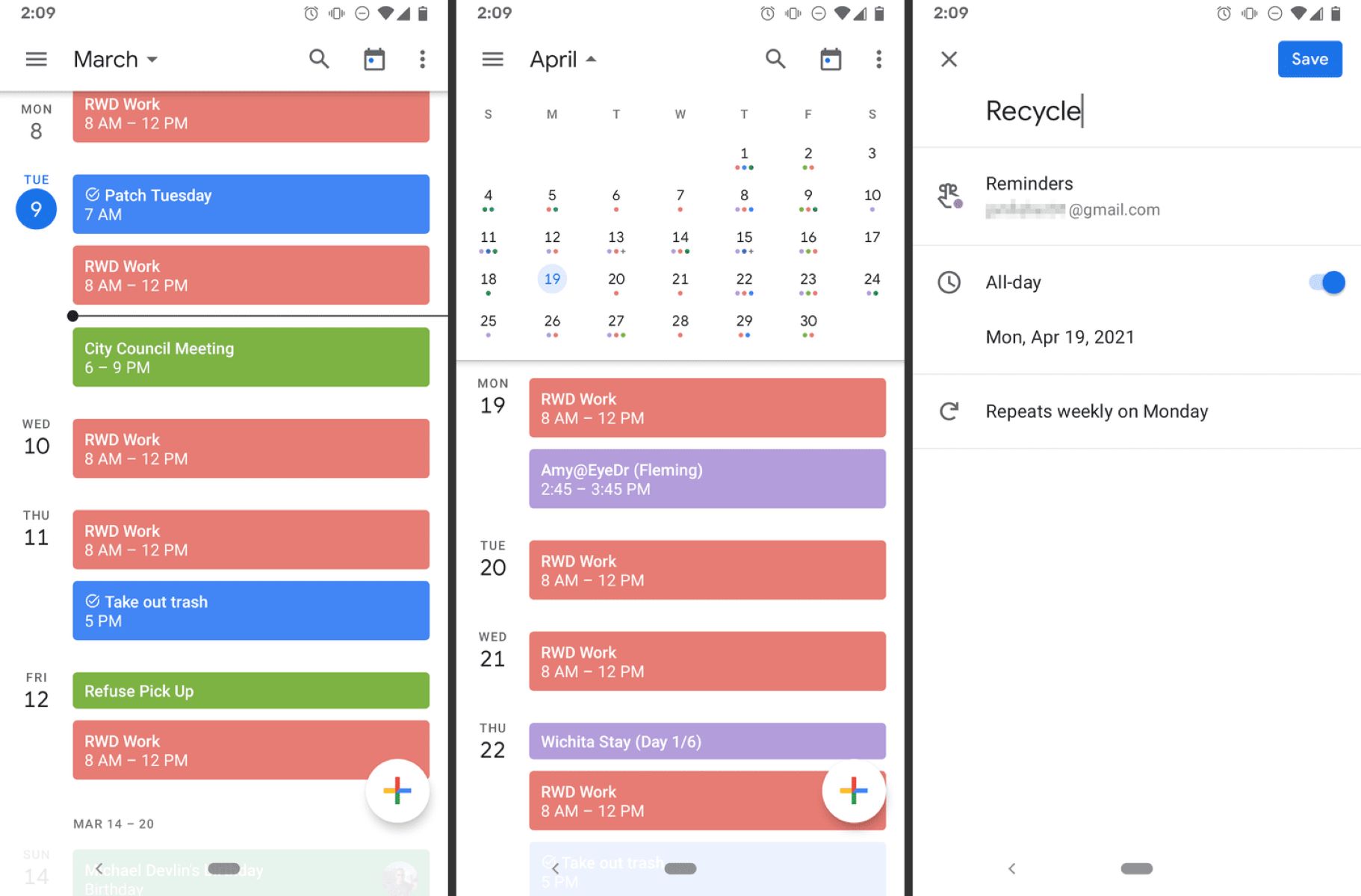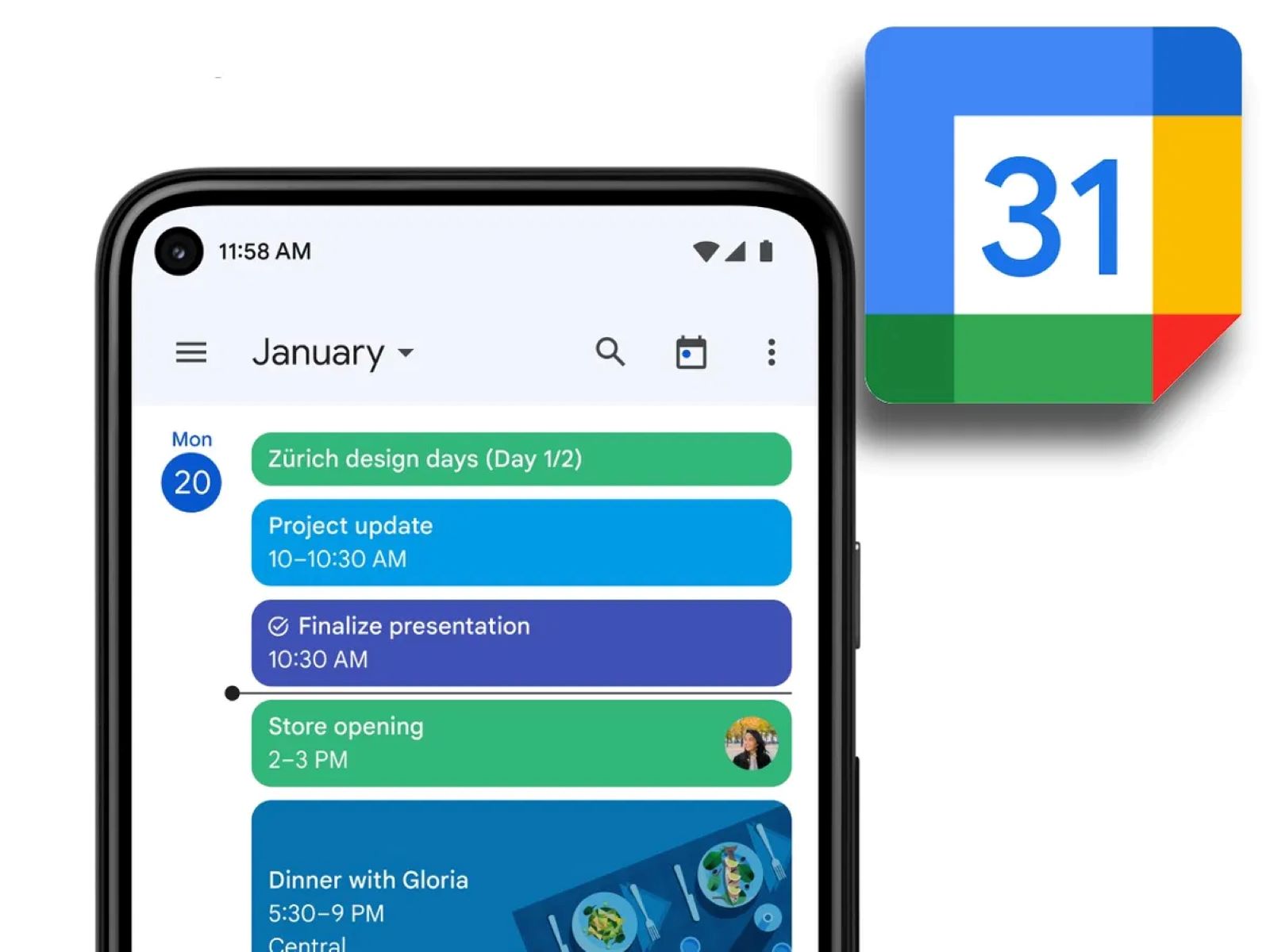Introduction
Google Calendar is a powerful tool that helps you stay organized and manage your schedule effectively. One of its most useful features is the ability to color code events, which allows for quick visual identification and categorization. By assigning different colors to specific types of events or categories, you can create a visually appealing and well-organized calendar that is easy to navigate at a glance.
Whether you use Google Calendar for personal or professional purposes, color coding can make a significant difference in how you manage your time and prioritize your tasks. In this article, we will explore the various ways you can color code in Google Calendar and how to make the most of this feature.
The process of color coding in Google Calendar is straightforward and highly customizable. You can assign colors to individual events, create new event categories, customize the color palette, apply colors to multiple events at once, and even sync color codes across different devices.
Color coding is not only visually appealing but also highly practical. By using it effectively, you can quickly differentiate between work-related commitments, personal appointments, deadlines, reminders, and other types of events. This enables you to have a clear overview of your schedule, helping you plan your day more efficiently and ensure you never miss an important event.
In the following sections, we will explore the various ways you can color code your Google Calendar, along with some helpful tips and tricks to enhance your organization and productivity.
Changing the Color of an Event
Changing the color of an event in Google Calendar is a simple and effective way to visually distinguish different types of events. By assigning specific colors to events, you can quickly identify and categorize them at a glance. Here’s how:
To change the color of an event, start by opening your Google Calendar and locating the event you want to modify. Click on the event to open its details.
In the event details window, you’ll find a color palette icon, usually represented by a square or a painter’s palette. Click on this icon to reveal a selection of colors to choose from.
Select the desired color from the palette that appears. You’ll notice that the event’s color instantly changes to the selected hue. This color change will be reflected on all views of your calendar, including the daily, weekly, and monthly overviews.
If none of the default colors suit your preferences, don’t worry; you have the option to customize the color palette. To do this, click on the “Custom” option in the color palette window.
Once you select “Custom,” a broader range of colors will appear. You can manually select a new color by adjusting the hue, saturation, and brightness sliders, or you can enter the specific color code if you have one in mind.
Once you’re satisfied with the custom color, click “OK” to apply it to the event. Google Calendar will update the event with your customized color, making it stand out from the rest.
Remember, changing the color of an event doesn’t affect its scheduling or any other details; it’s purely an aesthetic customization. You can change the color of an event at any time to better suit your preferences or requirements.
By utilizing the ability to change the color of an event in Google Calendar, you can effectively categorize different types of events and create a visual hierarchy that helps you prioritize your time and tasks more efficiently.
Creating New Event Categories
Google Calendar allows you to create custom event categories, enabling you to further organize and color code your events based on specific themes or purposes. By creating new event categories, you can easily differentiate between different types of events and have a more streamlined view of your schedule. Here’s how you can create new event categories:
To create a new event category, start by opening your Google Calendar and navigating to the left-hand panel, where you’ll find the “My calendars” section. Locate the “Create new calendar” button and click on it.
A window will appear prompting you to enter the details of your new calendar. Provide a name for your category, such as “Work,” “Personal,” “School,” or any other descriptive label that suits your needs.
Next, choose a color for your new event category by clicking on the color palette next to the category name field. Select a color that represents the type of events you plan to assign to this category. This color will serve as the default color for all events under this category.
You can also adjust the visibility settings of your new category. By default, the category will be checked, making it visible in your calendar view. If you prefer to hide the category initially, you can uncheck the box. It’s worth noting that you can always toggle the visibility of the category later on.
Once you’ve provided the necessary details, click on the “Create calendar” button to create the new event category. The category will now appear in the left-hand panel under the “My calendars” section, with the selected color and visibility settings.
To assign events to your newly created category, simply create a new event or edit an existing one. In the event details window, locate the “Calendar” dropdown menu, which lists all available event categories. Select your desired category from the list, and the event will be assigned to that category.
All events assigned to a specific category will inherit the color and visibility settings you defined earlier. This allows you to easily differentiate between different types of events and maintain a well-organized and visually appealing calendar.
By creating new event categories in Google Calendar, you can effectively group and categorize your events, providing a clear and structured view of your schedule.
Customizing the Color Palette
Google Calendar offers a range of default colors to choose from when assigning colors to your events. However, if you’re looking for more customization options or want to match specific colors, you can easily customize the color palette in Google Calendar. Here’s how you can do it:
To customize the color palette, start by opening your Google Calendar and navigating to the left-hand panel. Locate the “My calendars” section and hover your cursor over the desired calendar or event category that you want to customize the color palette for. A triple-dot menu icon will appear.
Click on the triple-dot menu icon, and a dropdown menu will appear. From the menu, select “Calendar settings” or “Edit calendar color,” depending on the available options.
In the settings or edit window, you’ll find various customization options, including the ability to change the calendar’s name, description, time zone, and more. To customize the color palette, look for the color section or icon.
Click on the color section or icon, and a color palette will appear, similar to the one used when changing the color of an event. The color palette will display a range of colors to choose from, allowing you to select a new color that suits your preferences.
If you’re looking for more customization options, such as using a specific color code or adjusting the saturation and brightness, look for the “Custom” or “Advanced” options. By selecting these options, you can manually enter a color code or fine-tune the colors to better suit your preferences.
Once you’re satisfied with the customized color, click “OK” or “Save” to apply the changes. Google Calendar will update the calendar or event category with the newly selected or customized color.
By customizing the color palette in Google Calendar, you can create a personalized and visually appealing calendar that reflects your unique style and preferences. Whether you prefer vibrant and bold colors or more muted and soothing tones, customizing the color palette allows you to align your calendar with your individual aesthetic.
Remember, by having a color palette that resonates with you, you’ll find it easier to navigate and interact with your calendar, ultimately enhancing your productivity and enjoyment while using Google Calendar.
Applying Colors to Multiple Events
Assigning colors to individual events in Google Calendar can be a time-consuming task, especially if you have a large number of events to color code. To streamline the process and save time, Google Calendar offers a convenient feature that allows you to apply colors to multiple events simultaneously. Here’s how you can easily apply colors to multiple events:
Start by opening your Google Calendar and navigating to the view where the events you want to color code are displayed. This could be the daily, weekly, or monthly view, depending on your preference and the scope of events you want to modify.
Select the first event by clicking on it, and then hold down the Shift key on your keyboard. While continuing to hold the Shift key, click on the last event in the group of events you want to color code. This action will highlight all the events between the first and last selected events.
With the multiple events selected, look for the color palette icon or the option to change the color of the selected events. Click on the icon or option, and a color palette will appear, just like when changing the color of an individual event.
Select the desired color from the palette, and Google Calendar will instantly update the color of all the selected events. This allows you to assign a consistent color to multiple events in one simple action.
By applying colors to multiple events simultaneously, you can quickly establish visual patterns and categorize groups of events without having to manually change the color for each event individually.
If you need to modify the color of a specific event within the group of events you colored, simply select that event individually and change its color. The individual modification will override the color applied to the group of events.
Using the feature to apply colors to multiple events not only saves you time but also ensures consistency and coherence throughout your calendar. This is especially handy when you have recurring events or events that are part of a particular project or theme.
By taking advantage of this convenient feature, you can easily color code multiple events in Google Calendar, creating a well-organized and visually appealing schedule that helps you navigate and manage your time effectively.
Syncing Color Codes Across Devices
One of the benefits of using Google Calendar is the ability to access and manage your schedule across multiple devices. If you use Google Calendar on your computer, smartphone, and tablet, it’s important to ensure that your color codes are synchronized across all devices. This allows for consistent organization and visual representation of your events, regardless of the device you’re using. Here’s how you can sync color codes across devices in Google Calendar:
Google Calendar’s color coding system is tied to your Google account, which means that any changes you make to colors or event categories will automatically sync across all devices associated with that account. This synchronization happens in real-time, ensuring that your calendar’s colors are consistent and up-to-date.
To check if your color codes are syncing properly, start by accessing Google Calendar on your computer. Make any necessary changes to the colors of events or event categories. Confirm that the changes are applied and reflected accurately on your computer.
Next, open Google Calendar on your smartphone or tablet, and navigate to the corresponding event or event category that you modified on your computer. Check if the changes you made are reflected on your mobile device as well. The colors should match what you set on your computer.
If you encounter any discrepancies or inconsistencies between devices, there are a few troubleshooting steps you can try:
- Ensure that you are using the same Google account on all devices. Multiple accounts may have separate color settings.
- Check that your devices are connected to the internet. Synchronization won’t occur if there is no network connection.
- Refresh the Google Calendar app on your mobile devices or log out and log back in to force a synchronization.
- Update the Google Calendar app to the latest version to ensure compatibility and bug fixes.
By syncing color codes across devices, you can effortlessly access and manage your calendar from anywhere, on any device, and have a consistent visual representation of your events. This ensures a seamless and user-friendly experience, allowing you to stay organized and stay productive wherever you are.
Remember that any modifications you make to colors or event categories will automatically sync across all devices linked to your Google account. This means you only need to make changes once, and they will be reflected on all devices, taking the hassle out of managing multiple calendars or accessing different devices.
With color codes synchronized across devices, you can easily stay on top of your schedule and maintain a visually appealing and well-organized calendar experience, no matter which device you use.
Using Color Codes for Different Types of Events
Color coding your events in Google Calendar allows you to create a visual system that helps you differentiate between different types of events easily. By assigning unique color codes to specific event categories or types, you can quickly identify and prioritize them in your calendar. Here’s how you can effectively use color codes for different types of events:
Start by defining the different types of events or categories that you want to distinguish in your calendar. This could include work-related events, personal appointments, social gatherings, deadlines, or any other specific categories that are relevant to your schedule.
Next, create separate event categories for each type by following the steps we covered previously. Assign a unique color to each category that reflects the nature or purpose of events falling into that category. For example, you might choose a vibrant green color for work-related events, a calming blue for personal appointments, and a striking red for important deadlines.
When creating or editing an event, assign the appropriate event category by selecting the corresponding category from the dropdown menu. The event will automatically inherit the color associated with that category, making it visually stand out in your calendar.
By having distinct color codes for different types of events, you can quickly identify the nature and importance of events at a glance. This allows you to prioritize and plan your time accordingly, ensuring that you don’t overlook critical tasks or commitments.
Additionally, you can utilize a color key or legend to help you remember and associate specific colors with their corresponding event categories. It’s also helpful to keep a consistent color scheme across your calendars to maintain clarity and avoid confusion.
As your calendar grows with events and commitments, having color-coded categories will make it easier to manage and navigate. It helps to visually organize your schedule and provides a better understanding of how your time is allocated across different areas of your life.
Remember, color coding is a personal preference, so feel free to experiment and find a system that works best for you. Whether you stick to a few essential colors or assign a unique color to every event category, the goal is to create a visual system that enhances your planning and productivity.
By utilizing color codes for different types of events in Google Calendar, you can optimize your time management and ensure that you’re staying on top of your commitments and responsibilities.
Organizing and Managing Color-Coded Events
Once you have color-coded your events in Google Calendar, it’s essential to have an organized system for managing and maintaining your color-coded schedule. By implementing effective strategies and practices, you can optimize your workflow and ensure that your calendar remains well-structured and easy to navigate. Here are some tips for organizing and managing your color-coded events:
1. Create a key or legend: To avoid any confusion, create a key or legend that explains the meaning behind each color. Place this key in a prominent location, such as a note on your computer or a bookmark in your planner. This way, you can quickly reference the key whenever you need to identify an event’s type or category.
2. Consistency is key: Maintain consistency in your use of colors and event categories. Stick to the same colors for specific types of events across different calendars or devices. This consistency allows you to instinctively associate each color with its designated category, minimizing confusion and ensuring a seamless experience.
3. Group related events: Organize your color-coded events by grouping related events together. For example, if you have multiple work-related event categories, create a folder or subcategory specifically for work events. This organization method provides a clear overview of your schedule while keeping similar events grouped together.
4. Use filters and search options: Take advantage of the filtering and search options in Google Calendar to easily locate specific events or event categories. You can filter events based on color, calendar, or keyword search. By utilizing these features, you can quickly find and navigate to the events you need.
5. Regularly review and update: Set aside some time regularly to review and update your color-coded events. Remove or update any events or categories that are no longer relevant or accurate. Keeping your calendar clean and updated ensures that you’re working with the most up-to-date information.
6. Sync with other productivity tools: Integrate your color-coded events in Google Calendar with other productivity tools or apps you use. This allows you to have a centralized view of your schedule and ensure that all your tasks, events, and reminders are well-aligned and organized.
7. Make use of reminders and notifications: Set up reminders and notifications for important events in your calendar. This way, you won’t miss any critical appointments or deadlines, even if you have a busy schedule. Customize the reminders to be delivered at a time and frequency that works best for you.
By implementing these organizational strategies, you can effectively manage and maintain your color-coded events in Google Calendar. A well-organized and thoughtfully managed schedule ensures that you can plan, prioritize, and stay on top of your commitments with ease and efficiency.
Tips and Tricks for Effective Color Coding
Color coding your events in Google Calendar is a powerful way to visually organize and manage your schedule. To make the most out of this feature, here are some tips and tricks for effective color coding:
1. Limit the number of colors: While it can be tempting to assign a unique color to every event category, using too many colors can become overwhelming and confusing. Limit yourself to a manageable number of colors that clearly differentiate between different types of events. This ensures a more streamlined and intuitive color-coding system.
2. Use colors intuitively: Choose colors that are visually intuitive and represent the nature or purpose of the event category. For example, use calming and soothing colors for personal events, and bright and vibrant colors for work-related events. Intuitive color choices help you quickly grasp the significance of an event without having to read its details.
3. Consider color psychology: Keep in mind that colors have psychological effects and may evoke certain emotions or moods. Use this knowledge to your advantage by assigning colors that align with the desired atmosphere or mindset for specific types of events. For example, use green for events that promote growth or blue for events that facilitate relaxation.
4. Create a hierarchy: Establish a hierarchy within your color-coded events by assigning different shades or hues to indicate varying levels of importance or urgency. Lighter shades can represent less critical events, while darker shades can represent high-priority tasks or deadlines. This hierarchy helps you quickly identify and prioritize your responsibilities.
5. Consider color-blindness: Remember that some individuals may have color-blindness or difficulty distinguishing certain colors. To ensure inclusivity, choose colors that have sufficient contrast and can be easily differentiated by individuals with color vision deficiencies. Utilize different hues or patterns in addition to colors to provide clarity and improve accessibility.
6. Utilize event symbols or icons: Complement your color-coding system with event symbols or icons to add visual cues and increase understanding. For example, use a clock icon for time-sensitive events or a task list icon for tasks or to-dos. These symbols can provide additional context and help you quickly grasp the nature of an event.
7. Experiment and adapt: Don’t be afraid to experiment and adapt your color-coding system as needed. Over time, you may discover new ways to optimize your color choices or find that certain categories require adjustments. Be flexible and open to making changes that help improve your calendar organization and productivity.
By implementing these tips and tricks, you can create an effective and intuitive color-coded system in Google Calendar. A well-thought-out color-coding system streamlines your schedule management, improves clarity, and enhances your productivity by providing a visual roadmap to navigate your events effectively.
Conclusion
Color coding in Google Calendar is a powerful tool that allows you to visually organize, prioritize, and manage your events effectively. By assigning specific colors to different event categories or types, you can easily differentiate between various types of events at a glance. This helps you stay organized, improve productivity, and make the most out of your time.
In this article, we explored how to change the color of an event, create new event categories, customize the color palette, apply colors to multiple events, sync color codes across devices, use color codes for different types of events, organize and manage color-coded events, and shared some tips and tricks for effective color coding.
Remember that effective color coding involves choosing a limited palette of intuitive colors, creating a hierarchy by assigning different shades or hues, considering color psychology, and being mindful of inclusivity and accessibility. By incorporating these strategies, you can optimize your color-coded calendar and create a visually appealing and well-organized schedule.
Ultimately, color coding in Google Calendar empowers you to have a clear overview of your events, prioritize your tasks, and stay on top of your commitments with ease. It enhances your productivity and enables you to manage your time more efficiently. So, don’t hesitate to start color coding your events in Google Calendar and unlock the benefits of a well-organized and visually appealing schedule.







